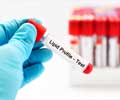Study says body fat distribution does not play an important role in the incidence of every subtype of premenopausal breast cancer, but confers an increased risk for ER-negative breast cancer

To determine the relation between body fat distribution and premenopausal breast cancer risk, Holly R. Harris, Sc.D., of Brigham and Women's Hospital and Harvard Medical School in Boston, and colleagues, conducted a prospective analysis among women in the Nurses' Health Study II, a cohort of 116,430 women who have been followed up since 1989. In 1993 the researchers sent women in that study a questionnaire in which the women were asked to measure and report their waist and hip circumference.
The researchers found no statistically significant associations between waist circumference, hip circumference, or the waist to hip ratio and overall risk of breast cancer. But they did find that abdominal adiposity, or waist circumference and the waist to hip ratio, was more strongly associated with risk of ER-negative breast cancer than with the risk of ER-positive breast cancer. Furthermore, the fact that body fat distribution was more strongly associated with ER-negative breast cancer than with ER-positive breast cancer suggests that body fat may influence breast cancer risk through sex hormone–independent pathways. Specifically, the researchers note that abdominal fat is associated with hyperinsulinemia, or pre-diabetes, and that insulin receptors are expressed in most breast cancers and have been shown to stimulate the growth of breast cancer cells in vitro.
"These findings may suggest that an insulin-related pathway of abdominal adiposity is involved in the etiology of premenopausal breast cancer," the authors write.
Source-Eurekalert














